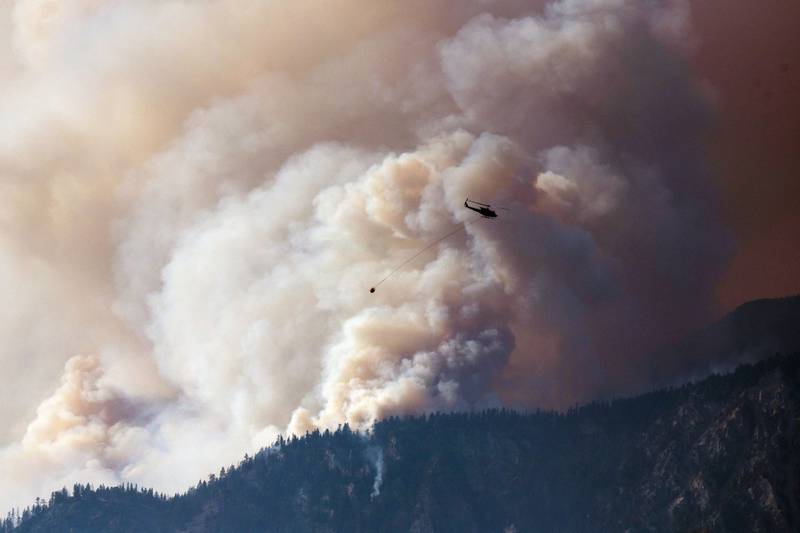After the unprecedented heatwave that recently seared North America’s Pacific northwest, leaving hundreds dead and resulting in buckled roads and massive power outages, a senior climatologist at Canada’s environment ministry remarked that it had been “warmer in parts of western Canada than in Dubai”.
It was a statement of fact. Less factual, in light of the intensity and apparent irreversibility of the climate crisis, was the climatologist’s subsequent comment: “I mean, it’s just not something that seems Canadian”.
On a warming planet, the notion of what weather is typically Canadian, Russian or of anywhere else may be changing forever. Temperature records are being broken in the Russian Arctic and efforts are underway to commercially develop the formerly ice-locked Northern Sea Route for shipping. In Verkhoyansk, a Siberian town considered one of the coldest inhabited places on earth, the land surface temperature or how hot it feels to the touch, hit 47.7°C. And Moscow just had its warmest June day since the time of the last Russian emperor, Nicholas II.
Heatwaves are becoming more frequent and more extreme in parts of the world that are normally temperate or cool and where summers are lush, green and pleasurable. In 2018, a scientific report issued by 13 US federal agencies said that the annual incidence of heatwaves in the country had tripled within half a century, from just two per year in the 1960s. The average heatwave is now also at least 40 days longer than in the 1960s, the report said. It is part of an overall warming trend, with the last seven years the warmest since the beginning of modern record-keeping nearly 150 years ago.
Even so, according to Dr Friederike Otto, associate director of the Environmental Change Institute at the University of Oxford, there is a “general hesitancy” to link intense heatwaves to climate change and the effects of human-induced global warming. Research by her team, she said, showed that heatwaves that hospitalised tens of thousands in Japan in 2018 and caused wildfires and melted permafrost in Siberia in 2020 were “at least 600 times more likely to have happened because of human-caused changes”.
This week, researchers are expected to publish a “rapid attribution” study, which will provide timely scientific evidence to show the extent to which climate change made the Pacific northwest heatwave more likely. Such studies, a relatively recent contribution to the discussion of climate change, can help identify adaptation strategies (as well as to fix the blame). Last year, MIT Technology Review put climate change attribution on a list of top 10 breakthrough technologies.
Even though the horrors of the most recent heatwave are fresh in people’s minds, there continues to be a lingering hesitancy about precisely quantifying the role of climate change in this extreme weather event. For instance, Michael Wehner, a climate scientist at Lawrence Berkeley National Laboratory in California who is contributing to the rapid attribution study, noted that the heat in the Pacific northwest was so intense that it was “well beyond what straightforward statistical analysis would suggest. It’s well beyond what climate models suggest”. This may be true — after all, temperature records were broken by previously unimaginable margins — but surely the point about an extreme weather event is that it doesn’t fit neatly into a model?
Experts are increasingly calling for a willingness to look past traditional models in everything to do with the climate, including in the crucial business of budgeting for climate risks. The argument goes that economists’ predilection for precision in cost-benefit analyses has led them to largely ignore the uncertainties thrown up by climate change. By sticking to the models of the 1990s, which assume a trade-off between climate action and economic growth, public policy has not moved fast enough to address the climate challenge.
More from Rashmee Roshan Lall
But now, there is no scope for delay. A leaked draft of the report prepared by the UN Intergovernmental Panel on Climate Change paints an alarming picture of catastrophic heatwaves, droughts and floods as the new normal by 2050. It also warns of numerous “tipping points”, slow-motion processes that suddenly accelerate, taking the planet to the point of no-return. These include the morphing of the Amazon from tropical forest to savannah, the leeching of billions of tonnes of carbon from Siberia’s permafrost and the melting of ice sheets in Greenland and Antarctica. The problem, of course, is that the UN report is not scheduled for release until next year so its call for “transformational change”, by redefining “our way of life and consumption” won’t be heard until then.
In the meantime, there is the organic lived reality of a hotter planet and the prospect of heatwaves occurring more often in unlikely places and lasting longer. And there is the fact that heat parches the earth, creating drought conditions, something that is currently affecting 93 per cent of America’s western region.
Heatwaves make headlines when they hit the US, Canada and Russia, but their effects on other parts of the world are just as dire. Last month, China suffered extreme temperatures as well as a simultaneous lack of hydropower, which forced blackouts in some of its largest industrial cities. In 2018, roughly 300,000 people aged over 65 died from extreme heat worldwide, mainly in India and China. It was, according to The Lancet, a medical journal, a 54 per cent increase since 2000. The question is what can be done, considering that even if greenhouse-gas emissions were cut to net-zero by the middle of this century, temperatures would continue to rise for some decades at least.
City planning will be key to reducing the build-up of heat in urban settings, with more shaded areas, buildings and roofs painted white and trees, perhaps planted along the famous Miyawaki forests scheme. Community “cooling centres” may now be a necessity, much like supermarkets and public libraries.
We’re in a different world now.


